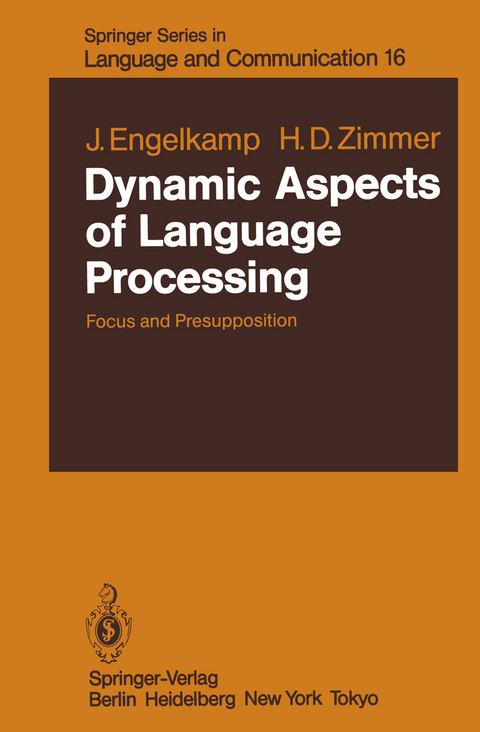
Dynamic Aspects of Language Processing
Springer Berlin (Verlag)
978-3-642-69118-8 (ISBN)
Johannes Engelkamp ist Professor für Kognitionspsychologie im Ruhestand. Sein besonderes Interesse in der Forschung galt den Fragen: Welche Informationen werden durch Sprache vermittelt und wie werden sie verarbeitet und wie funktioniert das Erinnern.
1. Introduction.- 1.1 The Aim of the Book.- 1.2 The Propositional Model of Understanding.- 1.3 Drawbacks of the Propositional Model of Understanding.- 1.4 The Organization of the Book.- 2. Typology of Knowledge.- 2.1 Entities and Predicates.- 2.2 Factual and General Knowledge.- 3. States of Knowledge.- 3.1 Given and New Knowledge.- 3.2 Activated, Deactivated and Focused Knowledge.- 3.3 Thematized Knowledge.- 4. Speech and the Visual Processing of Information.- 4.1 Three Kinds of Verbal Influence on Perception.- 4.2 Speech, Focus of Attention, and Perception.- 5. General Reflections on Communication.- 5.1 A Model of Communication.- 5.2 The Process of Understanding.- 6. Verbal Communication of Given and New Information.- 6.1 Verbal Communication of Conceptually Given and New Information.- 6.2 Verbal Communication of Relationally Given and New Information.- 6.3 Verbal Communication of Conceptually Given and New Information in the Context of Relationally Given and New Information.- 7. Verbal Communication of Focused Concepts.- 7.1 Verbal Communication of the Thematization Focus.- 7.2 Verbal Communication of Gap-Motivated Focus.- 8. Verbal Communication of RelationaUy Given and New Information in Standard Sentences.- 8.1 Passivkation and Relational Given-New Structure.- 8.2 Article Use and Relational Given-New Structure.- 9. Causes and Consequences of Focusing.- 9.1 Subjectivization and Focusing.- 9.2 Clefting and Focusing.- 10. Interaction Between Subjectivization and Clefting.- 10.1 Subjectivization and Clefting for the Speaker.- 10.2 Subjectivization and Clefting for the Hearer.- 10.3 Subjectivization and Clefting for Speaker and Hearer.- 11. Conclusion.- References.- Author Index.
| Erscheint lt. Verlag | 6.12.2011 |
|---|---|
| Reihe/Serie | Springer Series in Language and Communication |
| Zusatzinfo | X, 102 p. |
| Verlagsort | Berlin |
| Sprache | englisch |
| Maße | 155 x 235 mm |
| Gewicht | 188 g |
| Themenwelt | Naturwissenschaften ► Physik / Astronomie ► Mechanik |
| Schlagworte | Base • Influence • language • Pragmatik (Sprache) • Sprachpsychologie • Structure |
| ISBN-10 | 3-642-69118-8 / 3642691188 |
| ISBN-13 | 978-3-642-69118-8 / 9783642691188 |
| Zustand | Neuware |
| Haben Sie eine Frage zum Produkt? |
aus dem Bereich


